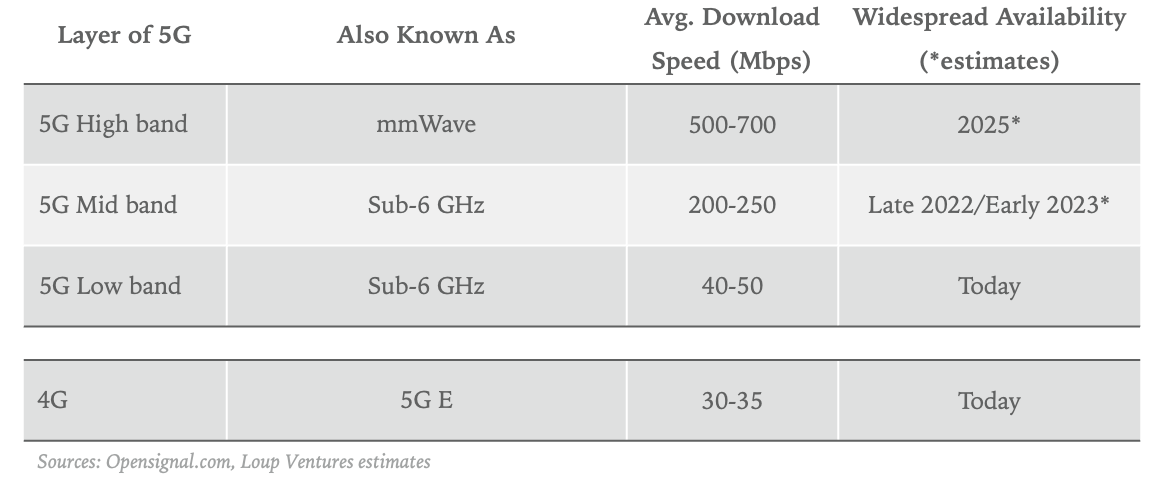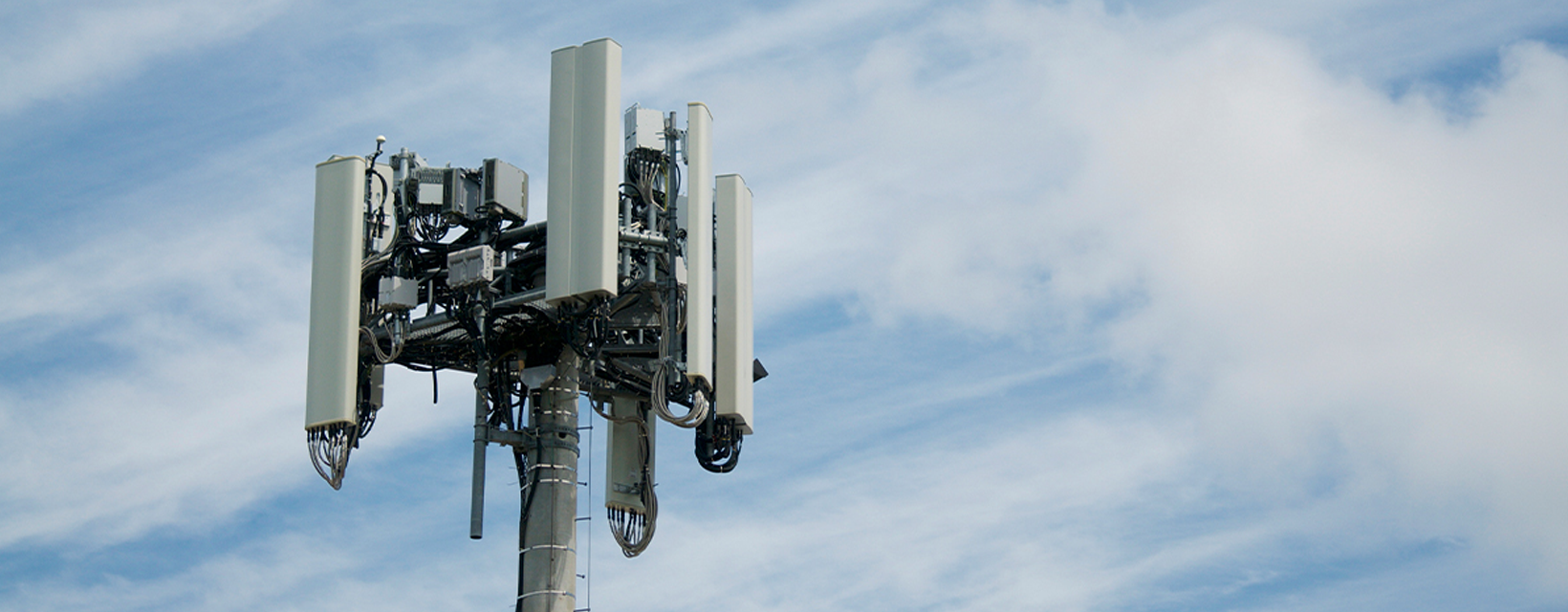Speed matters when it comes to navigating the 5G rollout. Average 5G speeds in the US have improved in the past year, yet still lag, with average US 5G download speeds currently at 65 Mbps. Speeds that will motivate consumers to upgrade their hardware and carrier plan to 5G is likely still a year away. Truly transformative 5G is likely three years plus away.
Over the next decade, we believe 5G will be a transformative force because it will allow users to leverage data in the cloud for real-time computing, opening the door for an array of new technologies and businesses. To get a more realistic sense of this timing, we’ve taken a step back and constructed a 5G rollout roadmap, which gives us a better sense of when 5G will impact consumer purchasing decisions and spur next-generation technologies such as IoT, wireless VR, and autonomous vehicles.
5G 101
As a reminder, we think of 5G as a three-layer cake:

Low band. At about ~40% faster than 4G, low band 5G is mostly marketing noise, and when you hear carriers advertise “nationwide 5G coverage,” they’re referring to this. That said, low band 5G is still a necessary layer of the cake because it provides the best range of any 5G, making it the only option to provide continuous coverage in remote areas.
Mid band. Offering download speeds around 5x faster than low band 5G, we think of mid band as consumer upgrade 5G. That’s because the large speed increase will enable faster video streaming, gaming, and better off-device storage among other things, which we believe will compel users to upgrade their devices as part of a multi-year cycle that will extend through 2024, benefitting phone makers such as Apple, Samsung and Google.
We estimate that mid band 5G will be widely available, defined as 75% of the US population having consistent access to it, in late 2022/early 2023. T-Mobile is the only carrier to date that has made progress with mid band rollout. After securing mid band spectrum last year at FCC auctions, Verizon and AT&T are expected to begin rolling out mid band at the end of 2021 through 2022.
High band. High band is where the true 5G magic will happen, and it’s usually what people think of when they envision 5G as a revolutionary technology. With average download speeds around 2.7x greater than mid band and peak speeds well over a 1GB plus, high band will power the next generation of transformative technology use cases. That said, given high band 5G waves travel short distances and are easily obstructed, it will be largely confined it to metro areas and large public venues that have developed infrastructure and a high density of mobile users.
Our best guess is that widespread high band 5G, defined as 75% of the US population in metro areas having consistent access, will be available by 2025 at the earliest. Progress is being made, with high band 5G available in select zones in about 75 cities, up from about 45 cities a year ago.
Where does 5G performance stand today?
The average download speeds in the table below highlight the fact that overwhelmingly the only 5G available today is low band. T-Mobile’s superior speeds reflect the fact that it’s the only carrier that has rolled out mid band. Availability measures the percentage of time 5G users spend connected to a 5G network.

Looking at high band 5G specifically (see table below), performance is progressing nicely, but availability is sparse. For example, Verizon’s average high band download speed has increased about 25% compared to a year ago, increasing from 495 Mbps to about 620 Mbps.

Given the capital-intensive nature, we continue to believe the high band 5G rollout will be slow, and that widespread availability will arrive in 2025 at the earliest.
Looking internationally for clues
While 5G performance and availability in the US is improving, it’s underwhelming compared to other countries around the world. In fact, the US doesn’t come close to ranking in the top 15 for average 5G download speeds. For perspective, average 5G down speeds in South Korea are around 400 Mbps, in Taiwan 370 Mbps, and Norway ~350 Mbps.
While it will take time, this tells us it’s a matter of when, not if, 5G speeds and availability reach a level in the US to be a transformational technology.
